Medicine Bow–Routt National Forest
- January 4, 2024
- 0 comment
Medicine Bow–Routt National Forest is a treasure trove of natural beauty and outdoor adventure. Located in the heart of Colorado and Wyoming, this vast forest encompasses over 2.9 million acres of pristine wilderness, including rugged mountains, rolling hills, and lush valleys. With over 600 miles of trails, visitors can explore the forest on foot, horseback, or mountain bike, and enjoy stunning vistas of snow-capped peaks, dense forests, and crystal-clear lakes. Whether you’re an avid hiker, a nature lover, or simply seeking a peaceful retreat, Medicine Bow–Routt National Forest has something for everyone.

Characterizing Features of the Medicine Bow–Routt National Forest
- Geographic Extent: The Medicine Bow–Routt National Forest spans over 2,222,313 acres, encompassing diverse landscapes across Wyoming and Colorado. This extensive area combines three previously distinct regions—Medicine Bow National Forest, Routt National Forest, and Thunder Basin National Grassland.
- Ranger Districts: The forest is administratively divided into six ranger districts, each with a specific focus. For example, the Hahns Peak/Bears Ears Ranger District in Steamboat Springs oversees the northwest portion of Routt National Forest, while the Brush Creek/Hayden Ranger District in Saratoga manages the western part of the Medicine Bow National Forest.
- Elevational Range: With elevations ranging from 5,500 feet to 12,940 feet, the Medicine Bow–Routt National Forest boasts a diverse topography. This elevation gradient contributes to a wide array of ecosystems, from semi-arid conditions at lower elevations to cold and humid climates in the high country.
- Climate Variation: The forest experiences a spectrum of climates due to its vast geographic coverage. Visitors may encounter semi-arid conditions at lower elevations and should be prepared for harsh weather, including frost, snow, and high winds, even during the summer months at higher elevations.
- Recreational Opportunities: Offering year-round recreational activities, the forest caters to a broad audience. Downhill skiing and winter sports are popular, with two renowned ski areas, including the globally acclaimed Steamboat Springs Ski Area. In addition, there are over 1,360 developed sites, eight mountain lakes with boating facilities, and 162 recreational homes with Forest Service permits.
- Wilderness Areas: The Medicine Bow–Routt National Forest is home to 10 designated Wilderness Areas, such as the Snowy Range and Mount Zirkel Wildernesses. These protected areas provide a sanctuary for wildlife and offer a pristine environment for those seeking a more secluded and untouched natural experience.
- Cultural and Historical Significance: Rooted in Native American history, the Medicine Bow National Forest section was named after the powwows held by tribes seeking mountain mahogany for crafting bows and performing healing rituals. The forest’s rich cultural tapestry adds depth to its natural wonders.
- Resource Management: Beyond recreational offerings, the forest serves as a vital resource for timber, forage for livestock, and a crucial source of water for irrigation, domestic use, and industrial needs. Its complex land patterns, combining federal, state, and private lands, underscore its multifaceted role in sustaining local ecosystems and economies.
- Thunder Basin National Grassland: The 547,620-acre Thunder Basin National Grassland, located in northeastern Wyoming, offers unique recreation opportunities, including hiking, sightseeing, hunting, and fishing. The absence of developed campgrounds emphasizes a more rugged and untouched experience within this semi-arid climate.
- Consolidation History: Originally distinct areas—Medicine Bow National Forest, Routt National Forest, and Thunder Basin National Grassland—were administratively combined in 1995. This consolidation aimed to streamline management efforts, recognizing the similarity of resources and their proximity to one another.
History
Established as a forest reserve in 1902, the history of the Medicine Bow–Routt National Forest is deeply rooted in the rich tapestry of American conservation and natural resource management. Its origins trace back to the creation of the Medicine Bow National Forest, situated in southeastern Wyoming. Named after the Native American powwows where tribes gathered to seek mountain mahogany for crafting bows and perform healing rituals, this initial forest reserve encompassed 1,096,891 acres of pristine wilderness. Meanwhile, in 1905, President Theodore Roosevelt established the Routt National Forest in northwestern Colorado, commemorating John Routt, Colorado’s first governor. Over the years, these two separate entities evolved in tandem, each playing a crucial role in preserving the ecological integrity of their respective regions.
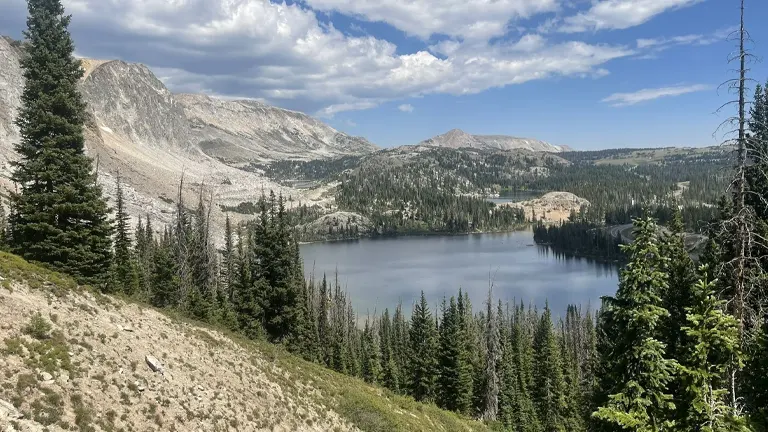
The forest’s consolidation in 1995 marked a pivotal chapter in its history, as Medicine Bow National Forest, Routt National Forest, and Thunder Basin National Grassland were administratively combined. This strategic move, driven by the recognition of resource similarities and geographical proximity, aimed to enhance efficiency in managing the vast 2,222,313-acre expanse that now stretches from north-central Colorado to central Wyoming.
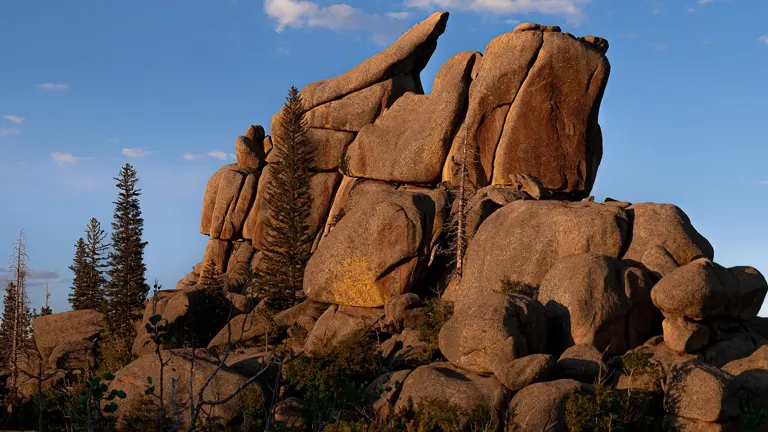
Throughout its history, the Medicine Bow–Routt National Forest has been a sanctuary for diverse ecosystems, offering year-round recreational opportunities, sustaining local economies, and serving as a vital resource for timber, livestock forage, and water. Today, its story continues to unfold as a testament to the enduring commitment to balancing human interaction with the preservation of the natural wonders that define this remarkable landscape.
Importance in Conservation and Recreation of Medicine Bow–Routt National Forest
The Medicine Bow–Routt National Forest stands as a paramount testament to the symbiotic relationship between conservation and recreation, embodying a delicate equilibrium between preserving ecological integrity and providing unparalleled opportunities for outdoor enthusiasts. Encompassing over 2 million acres across Wyoming and Colorado, this expansive forest plays a pivotal role in biodiversity conservation, serving as a haven for numerous species of flora and fauna within its diverse ecosystems. With 10 designated wilderness areas, the forest safeguards critical habitats and allows for the undisturbed flourishing of wildlife.

Beyond its conservation significance, the forest is a recreational paradise, offering a myriad of activities such as hiking, skiing, camping, and fishing. Its 1,360 developed sites, two ski areas, and over 600 miles of trails beckon adventurers to explore its pristine landscapes. The conservation and recreational importance of the Medicine Bow–Routt National Forest converge harmoniously, emphasizing the crucial balance between environmental stewardship and the sustainable enjoyment of nature, ensuring that this natural treasure remains a thriving legacy for generations to come.
Unique Location of Medicine Bow–Routt National Forest
Located within the heart of the Rocky Mountains, the Medicine Bow–Routt National Forest boasts a unique and captivating location that sets it apart as a natural gem. Stretching across the states of Wyoming and Colorado, this vast expanse covers over 2 million acres, showcasing an extraordinary range of landscapes from the rolling plains of northeastern Wyoming to the majestic peaks of north-central Colorado. The forest’s strategic position straddling these two states not only underscores its geographical significance but also contributes to its unparalleled biodiversity.
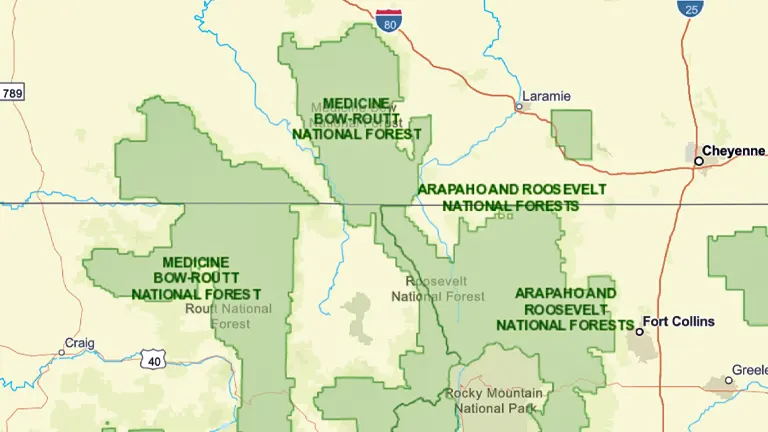
Encompassing portions of diverse mountain ranges such as the Gore Range, Flat Tops, and Medicine Bow Mountains, the forest showcases an intricate mosaic of ecosystems, elevations, and climates. From semi-arid conditions at lower elevations to the cold and humid climate of the high country, the Medicine Bow–Routt National Forest’s unique location results in a rich tapestry of natural wonders, making it a destination that beckons adventurers and conservationists alike to explore and cherish its distinctive beauty.
Diverse Vegetation and Plant Species in Medicine Bow–Routt National Forest
- Engelmann Spruce (Picea engelmannii) and Subalpine Fir (Abies lasiocarpa): Found in the subalpine zones, Engelmann spruce and subalpine fir are well-adapted to the higher elevations of the Medicine Bow–Routt National Forest. These conifers contribute significantly to the forest’s ecosystems, providing habitat for species like the red-breasted nuthatch and the elusive pine marten.
- Quaking Aspen (Populus tremuloides): Scattered across the landscape, quaking aspen groves create a captivating mosaic of white bark and vibrant golden leaves in the fall. As a deciduous species, aspen groves play a crucial role in supporting diverse herbaceous vegetation and are interconnected by a single root system, forming one of the largest living organisms on Earth.
- Alpine Forget-Me-Not (Eritrichium nanum): Flourishing in the alpine tundra, the alpine forget-me-not is a hardy wildflower with distinctive blue blossoms. This plant has adapted to the short growing season and challenging conditions of high elevations, providing a burst of color in the alpine landscapes and serving as a food source for pollinators.
- Sagebrush (Artemisia tridentata) and Mountain Mahogany (Cercocarpus montanus): Thriving in lower elevations, sagebrush and mountain mahogany contribute to the semi-arid character of specific regions in the forest. These shrubs provide essential cover and forage for wildlife adapted to arid climates, including mule deer and sage grouse.
- Columbines (Aquilegia): Various columbine species, including the iconic Colorado columbine, grace montane meadows. These unique and intricate flowers attract pollinators like hummingbirds and bees, showcasing the biodiversity of plant-pollinator interactions in the forest’s ecosystems.
- Willows (Salix spp.) and Sedges (Carex): Along riverbanks and riparian zones, willows and sedges create crucial habitats for amphibians, insects, and birds. Their presence helps stabilize streambanks, control erosion, and provide a diverse array of food sources for wildlife dependent on riparian environments.
- Indian Paintbrush (Castilleja): Vibrant Indian paintbrushes add bursts of color to montane meadows and grasslands. These wildflowers have evolved unique adaptations, with their colorful bracts attracting specific pollinators like hummingbirds, and they often share intricate relationships with the root systems of nearby plants.
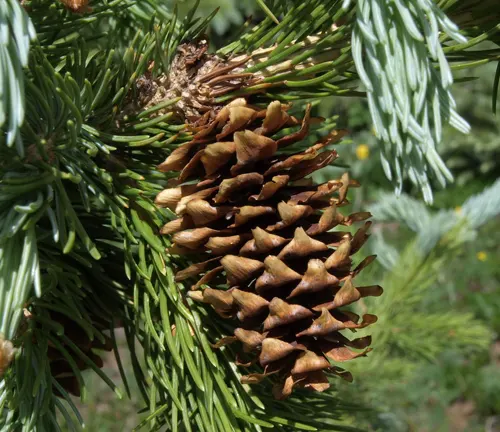

This diverse array of vegetation within the Medicine Bow–Routt National Forest not only contributes to the visual richness of the landscape but also plays vital roles in supporting intricate ecological relationships and providing habitats for a wide range of plant and animal species.
Fauna
- Elk (Cervus canadensis): The Medicine Bow–Routt National Forest is home to a thriving population of elk. These majestic herbivores play a crucial role in shaping the forest ecosystem through their grazing habits. During the fall rut, the bugling calls of male elk resonate through the forest, creating a distinctive and iconic soundscape.
- Mule Deer (Odocoileus hemionus): Mule deer are a common sight in the lower elevations of the forest. Their adaptability to various habitats, from sagebrush areas to montane meadows, makes them a versatile and frequently observed species. Mule deer are vital to the ecosystem as both browsers and prey for predators like mountain lions and wolves.
- American Black Bear (Ursus americanus): The forest provides suitable habitat for American black bears, offering a mix of dense woodlands and open areas. These omnivores forage for berries, nuts, and insects, contributing to the forest’s ecological balance. Visitors should practice bear safety measures, especially in bear country.
- Bald Eagle (Haliaeetus leucocephalus): The Medicine Bow–Routt National Forest serves as a habitat for bald eagles, majestic birds of prey that frequent the forest’s lakes and rivers. Their presence adds to the rich bird diversity and highlights the importance of preserving water ecosystems for various species.
- Cutthroat Trout (Oncorhynchus clarkii): The forest’s lakes and streams are home to cutthroat trout, a native fish species. Conservation efforts aim to protect and restore aquatic habitats, ensuring the survival of these iconic trout and providing recreational opportunities for anglers who appreciate the pristine waters of the forest.
- Boreal Owls (Aegolius funereus): The dense coniferous forests of the Medicine Bow–Routt National Forest provide suitable habitat for boreal owls. These elusive nocturnal predators play a vital role in controlling rodent populations, contributing to the overall health of the forest ecosystem.
- Canada Lynx (Lynx canadensis): The Canada lynx, a species specially adapted to cold, snowy environments, finds refuge in the forest. Conservation efforts are in place to protect and enhance lynx habitat, emphasizing the importance of maintaining healthy, interconnected landscapes for this elusive feline species.
- Great Gray Owl (Strix nebulosa): The forest is a haven for the great gray owl, a species that relies on large, old-growth forests for nesting. These majestic owls are indicators of forest health, emphasizing the significance of preserving mature forest stands within the Medicine Bow–Routt National Forest.

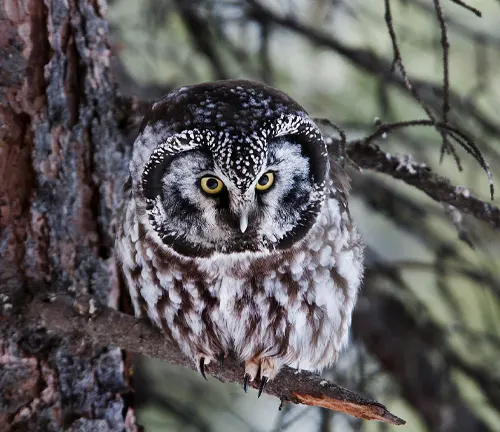
The diverse fauna within the Medicine Bow–Routt National Forest represents a complex web of ecological interactions. Conservation efforts in the forest aim not only to protect individual species but also to sustain the overall biodiversity and ecological balance of this remarkable natural environment.
Attractions in Medicine Bow–Routt National Forest
1. Snowy Range Scenic Byway

The Snowy Range Scenic Byway is a breathtaking route that traverses through the heart of the Medicine Bow National Forest, offering travelers panoramic views of the Snowy Range Mountains. This scenic drive, stretching over 29 miles along Wyoming Highway 130, takes visitors through alpine meadows, past pristine lakes, and provides access to numerous trailheads for hiking and wildlife viewing.
2. Medicine Bow Peak
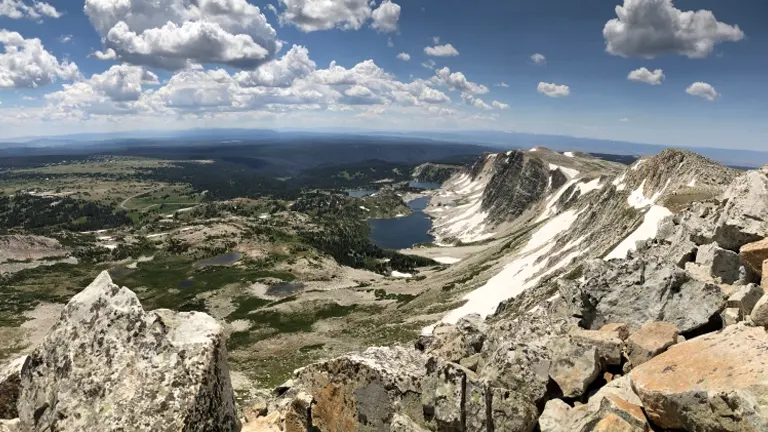
Standing as the highest point in the Medicine Bow Mountains, Medicine Bow Peak is a prominent attraction for hikers and outdoor enthusiasts. Rising to an elevation of 12,013 feet, the peak offers awe-inspiring vistas of the surrounding landscapes. The journey to the summit, often beginning at Lake Marie, takes hikers through alpine meadows adorned with vibrant wildflowers.
3. Steamboat Springs
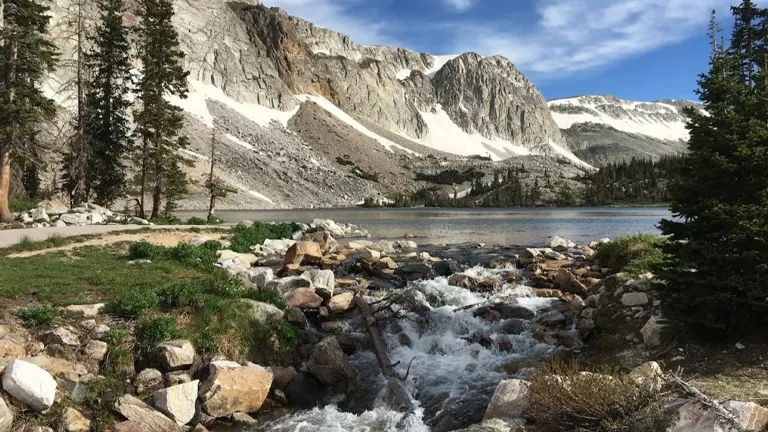
Located within the Routt National Forest, Steamboat Springs is a year-round destination renowned for its outdoor recreational opportunities. In winter, the Steamboat Ski Resort draws skiers and snowboarders with its world-class slopes, while the summer months offer activities such as mountain biking, hiking, and hot air ballooning, making it a hub for adventure seekers.
4. Zirkel Wilderness Area
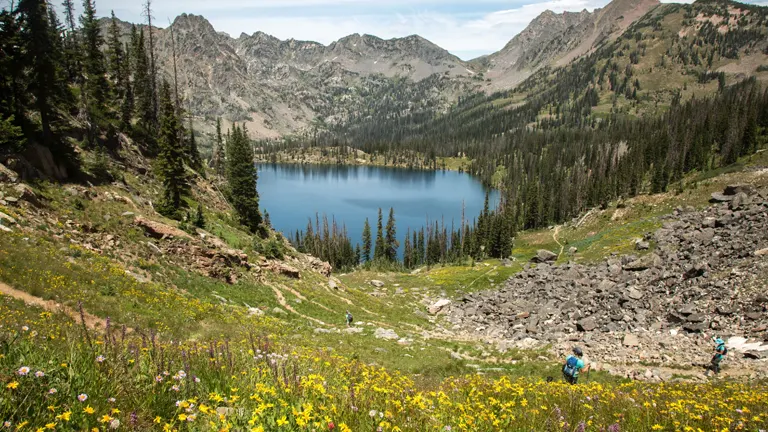
The Mount Zirkel Wilderness, located within the Routt National Forest, is a pristine and protected area known for its diverse ecosystems. Home to pristine alpine lakes, dense forests, and rugged mountain terrain, the wilderness area offers numerous trails for backpacking and camping, providing a true backcountry experience.
5. Thunder Basin National Grassland
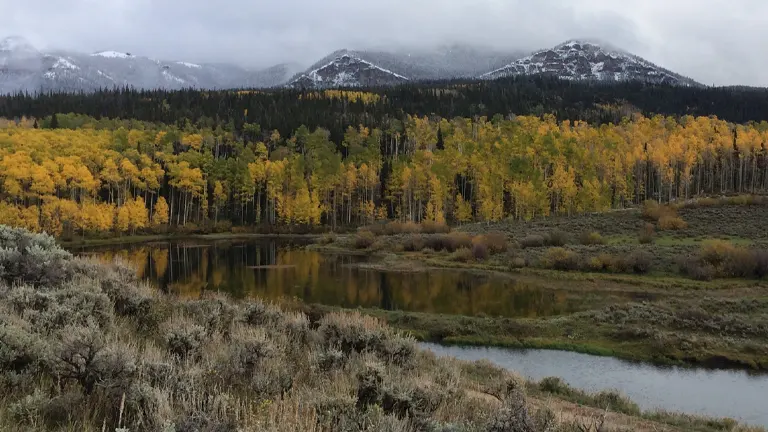
Adjacent to the Medicine Bow–Routt National Forest, the Thunder Basin National Grassland in northeastern Wyoming offers a unique contrast with its vast grassy landscapes. Visitors can explore this expansive grassland through scenic drives, enjoying views of rolling hills, diverse plant life, and the chance to spot pronghorn and other wildlife.
6. Vedauwoo Recreation Area
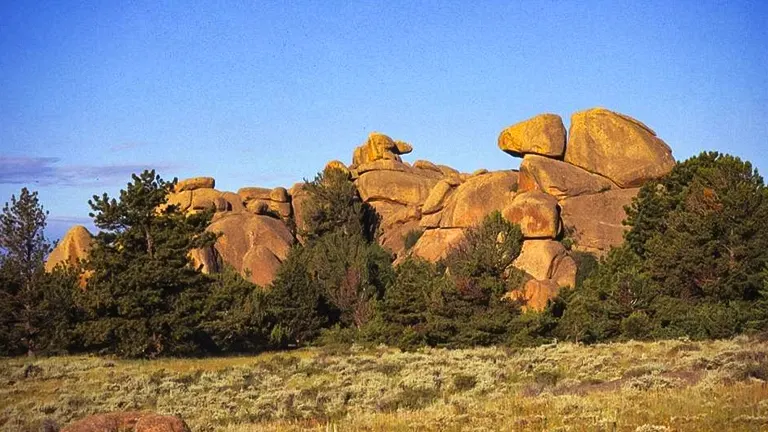
Situated immediately north of Interstate 80, the Vedauwoo Recreation Area is a geological wonder featuring unique rock formations, popular among rock climbers and hikers. The towering granite outcrops create an otherworldly landscape, and the area is known for its diverse birdlife, making it a haven for birdwatchers and outdoor enthusiasts alike.
7. Hahns Peak

The Hahns Peak area, administered by the Hahns Peak/Bears Ears Ranger District, is steeped in history and outdoor recreation. The iconic Hahns Peak, an extinct volcano, offers panoramic views of the surrounding landscapes. The historic Hahns Peak Village nearby provides a glimpse into the area’s mining history and is listed on the National Register of Historic Places.
8. Fish Creek Falls
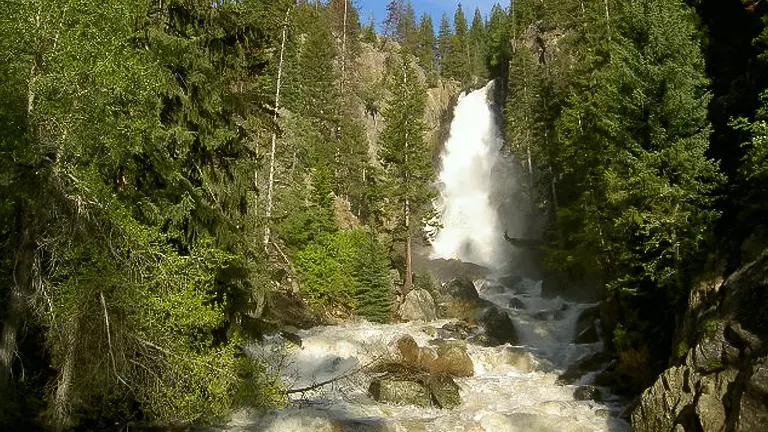
Located near Steamboat Springs, Fish Creek Falls is a captivating natural attraction. The 280-foot waterfall, framed by rugged cliffs and lush vegetation, is easily accessible and offers both short and more challenging hiking trails. In winter, the falls transform into a winter wonderland, attracting ice climbers and showcasing the forest’s beauty in a different season.
These attractions within the Medicine Bow–Routt National Forest not only showcase the diverse landscapes and recreational opportunities available but also highlight the rich cultural and geological heritage of this expansive and captivating natural haven.
Recreational Activities in the Medicine Bow–Routt National Forest
1. Hiking and Backpacking
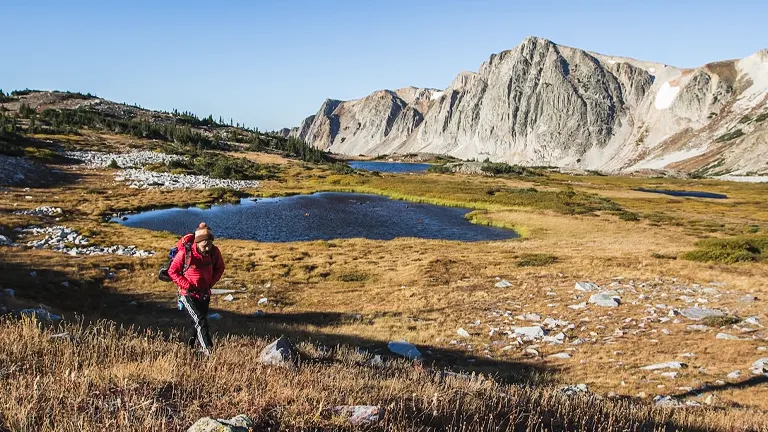
The Medicine Bow–Routt National Forest offers an extensive network of trails catering to hikers of all levels. From the gentle paths through montane meadows to challenging ascents leading to alpine vistas, the forest provides a diverse range of hiking experiences. Popular trails include those leading to Medicine Bow Peak and through the Zirkel Wilderness, allowing visitors to immerse themselves in the pristine landscapes and varied ecosystems.
2. Skiing and Snowboarding
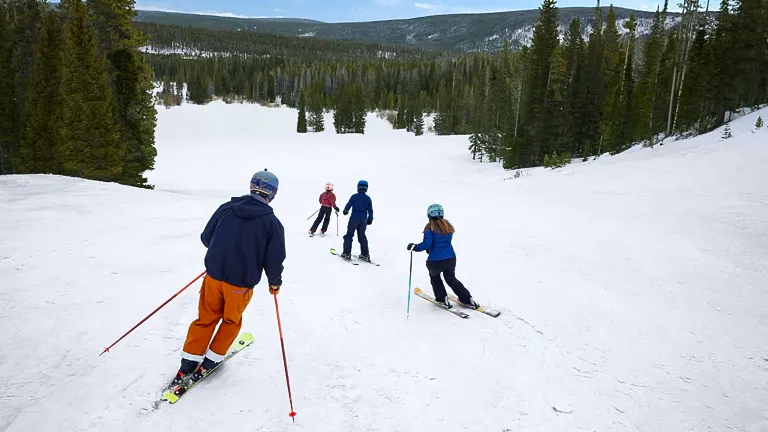
Winter transforms the national forest into a snowy wonderland, making it a haven for skiing and snowboarding enthusiasts. The Steamboat Ski Resort, situated within the Routt National Forest, boasts world-class slopes, powder-filled glades, and opportunities for backcountry skiing. The snowy terrain of the Snowy Range Mountains also attracts winter sports enthusiasts seeking a mix of groomed trails and untouched powder.
3. Camping
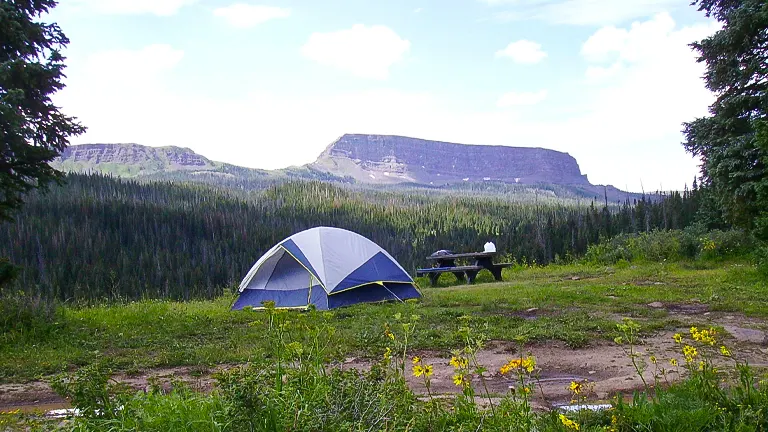
Camping in the Medicine Bow–Routt National Forest provides an immersive experience in nature. With over 1,360 developed sites and numerous backcountry camping opportunities, visitors can choose between established campgrounds or seek solitude in more remote areas. Whether under the towering pines of the Routt National Forest or near alpine lakes in the Medicine Bow Mountains, camping allows for a close connection with the natural surroundings.
4. Fishing
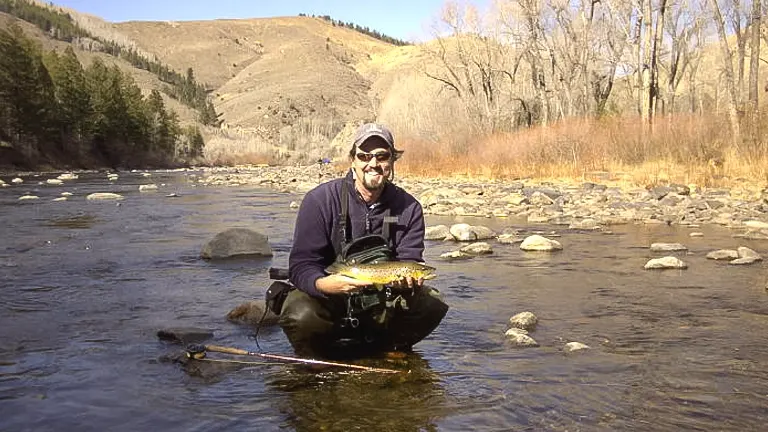
The forest’s lakes and streams are a haven for anglers, offering opportunities to catch a variety of fish species. Cutthroat trout inhabit the pristine waters, and popular fishing locations include the lakes in the Zirkel Wilderness and the Thunder Basin National Grassland. Fishing in these scenic settings provides not only a recreational pursuit but also a chance to appreciate the tranquility of the forest.
5. Mountain Biking
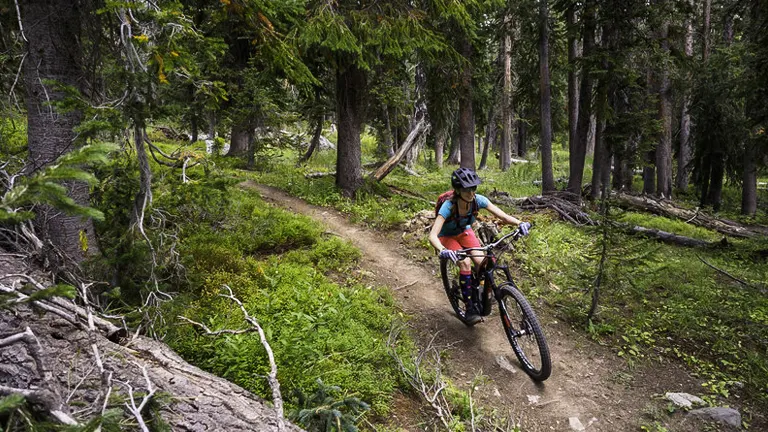
During the warmer months, mountain biking enthusiasts can explore a network of trails that wind through the forest’s diverse landscapes. From the challenging singletracks to scenic gravel paths, the forest provides options for riders of varying skill levels. Steamboat Springs is particularly renowned for its mountain biking trails, attracting riders seeking thrilling descents and stunning scenery.
6. Wildlife Viewing

The Medicine Bow–Routt National Forest is a wildlife enthusiast’s paradise, with opportunities to spot iconic species such as elk, mule deer, and black bears. The diverse ecosystems support a rich array of fauna, including birds like bald eagles and boreal owls. Whether through guided tours or self-guided explorations, wildlife viewing adds an exciting dimension to the forest experience.
7. Rock Climbing at Vedauwoo
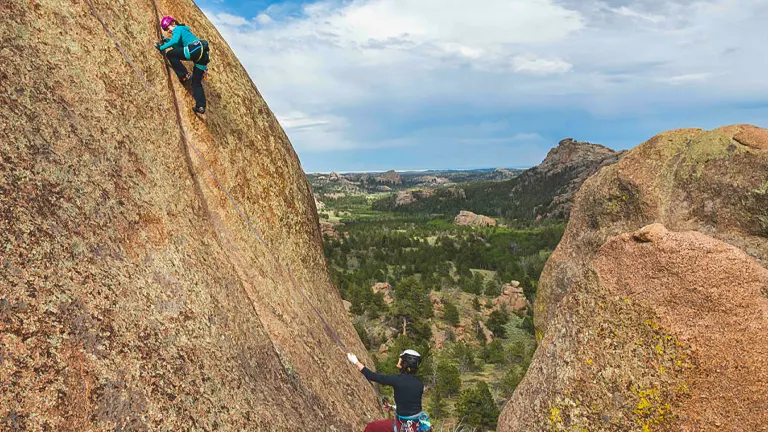
The Vedauwoo Recreation Area, known for its unique granite rock formations, is a rock climber’s haven. The towering rocks with their distinctive shapes and cracks provide a challenging and visually stunning environment. Climbers from novice to expert can find suitable routes, and the area’s natural beauty enhances the thrill of the climbing experience.
8. Scenic Drives
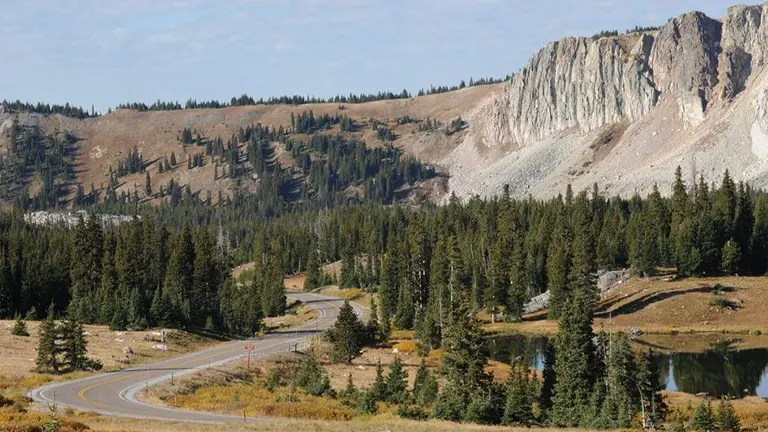
For those who prefer a more relaxed exploration, the forest offers scenic drives such as the Snowy Range Scenic Byway. These drives provide stunning views of mountain vistas, alpine lakes, and expansive meadows. The byways are a perfect way to appreciate the grandeur of the landscape without leaving the comfort of a vehicle.
The recreational activities in the Medicine Bow–Routt National Forest cater to a wide range of interests, inviting outdoor enthusiasts to engage with the diverse and captivating environments throughout the year. Whether seeking adventure or tranquility, the forest provides a myriad of opportunities for memorable experiences.
Facilities and Amenities in Medicine Bow–Routt National Forest
- Visitor Centers: The Medicine Bow–Routt National Forest provides well-equipped visitor centers that serve as gateways to the forest’s wonders. These centers offer a wealth of information, including trail maps, safety guidelines, and educational displays highlighting the flora and fauna of the region. Knowledgeable staff are on hand to assist visitors in planning their adventures, making these centers invaluable starting points for exploration.
- Campgrounds: With over 1,360 developed campsites scattered throughout the forest, camping enthusiasts have a range of options to choose from. From family-friendly sites with amenities like picnic tables and fire rings to more primitive, secluded spots, the campgrounds cater to various preferences. Many sites are strategically located near trailheads, lakes, and points of interest, enhancing the overall camping experience.
- Picnic Areas: Scenic picnic areas within the Medicine Bow–Routt National Forest provide ideal spots for visitors to relax and enjoy outdoor meals surrounded by nature. Equipped with picnic tables and often located near water bodies or scenic viewpoints, these areas offer a chance to rejuvenate during a day of exploration.
- Interpretive Trails and Exhibits: Throughout the forest, interpretive trails and exhibits provide an educational experience for visitors. These trails feature informative signage, guiding hikers through ecosystems and points of interest while explaining the natural and cultural history of the area. The exhibits contribute to a deeper understanding and appreciation of the forest’s ecological significance.
- Restrooms and Facilities: Well-maintained restroom facilities are strategically placed across the forest, ensuring visitor comfort during their outdoor adventures. Whether located at campgrounds, trailheads, or major recreation areas, these facilities contribute to a positive and sustainable experience for all visitors.
- Boating Facilities: The forest’s lakes offer opportunities for boating, and boating facilities are available at certain locations. Whether launching a kayak, canoe, or motorized boat, visitors can explore the tranquil waters surrounded by forested landscapes. Boating facilities contribute to a well-rounded recreational experience within the national forest.
- Fishing Docks and Platforms: For fishing enthusiasts, fishing docks and platforms are strategically positioned at various lakes and water bodies within the forest. These structures provide accessible and safe locations for anglers to cast their lines and enjoy the serene beauty of the forest while engaging in this popular recreational activity.
- Trailhead Facilities: Trailheads in the Medicine Bow–Routt National Forest are equipped with amenities such as parking areas, trail maps, and information boards. These facilities serve as launching points for various hiking and backpacking adventures, ensuring that visitors are well-prepared and informed before embarking on their journeys.
The facilities and amenities within the Medicine Bow–Routt National Forest are designed to enhance the overall visitor experience, providing both practical resources and educational opportunities. From well-equipped visitor centers to thoughtfully placed campgrounds and recreational facilities, these amenities contribute to a seamless and enjoyable exploration of the diverse landscapes within the forest.
Tips for Visiting Medicine Bow–Routt National Forest
- Check Weather Conditions: Before embarking on your journey to the Medicine Bow–Routt National Forest, it’s essential to check the weather conditions, as they can vary significantly due to the diverse topography. Wyoming and Colorado experience rapid weather changes, especially at higher elevations. Summer may bring warm days, but sudden afternoon thunderstorms are common. In winter, snowfall can be substantial, impacting road accessibility and trail conditions. Being prepared for weather fluctuations ensures a safer and more enjoyable outdoor experience.
- Pack Essentials for High Altitudes: Given the forest’s diverse elevations, including high-altitude areas, it’s crucial to pack accordingly. Bring layers to accommodate temperature changes, especially if engaging in activities that involve elevation gain. Sun protection is essential, so pack sunscreen, sunglasses, and a hat to shield against intense mountain sun. Additionally, staying hydrated is crucial at higher elevations, so carry an adequate water supply to prevent altitude-related issues.
- Respect Wildlife and Follow Leave No Trace Principles: The Medicine Bow–Routt National Forest is home to diverse wildlife, and encountering animals is part of the forest experience. It’s vital to observe wildlife from a distance, never approach or feed them, and keep a respectful distance to avoid disrupting their natural behaviors. Following Leave No Trace principles, such as properly disposing of waste and minimizing impact, ensures the preservation of the forest’s ecosystems for future generations.
- Know Trail Regulations and Closures: Familiarize yourself with trail regulations and any closures that may be in effect. Some areas within the forest may have seasonal restrictions or closures to protect wildlife habitats or during restoration efforts. Trailhead information boards and visitor centers provide up-to-date information, ensuring that you choose trails and activities in compliance with forest management regulations.
- Be Prepared for Remote Areas: The Medicine Bow–Routt National Forest encompasses vast and remote areas, so being prepared is crucial. Inform someone about your plans, carry a map, and have a well-equipped emergency kit. Cell phone reception may be limited in certain areas, so consider alternative communication methods like a two-way radio. Ensure your vehicle is suitable for forest roads, and carry essentials like extra water, snacks, and a first aid kit.
- Practice Fire Safety: Due to the forest’s semi-arid conditions, fire safety is paramount. Check for fire restrictions before your visit, and adhere to all regulations. If allowed, use designated fire rings and ensure fires are fully extinguished before leaving. Awareness of fire conditions and responsible fire practices contribute to the conservation of this natural landscape.
- Respect Trail Etiquette: Whether hiking, biking, or engaging in other recreational activities, respecting trail etiquette is essential. Yield to other trail users, especially uphill hikers, and minimize your impact on the environment. Stay on designated trails to protect fragile ecosystems, and avoid disturbing wildlife. Being courteous to fellow outdoor enthusiasts ensures a positive and enjoyable experience for everyone.
- Stay Informed About Road Conditions: Forest roads may be subject to closures or challenging conditions, especially during inclement weather. Before venturing into the forest, check for road conditions and closures. This information is often available at visitor centers, ranger stations, or online. Planning your route and staying informed about road conditions contribute to a smoother and safer exploration of the forest.
Following these tips ensures a responsible and enjoyable visit to the Medicine Bow–Routt National Forest, allowing you to appreciate the natural beauty while preserving its ecological integrity.
Recommendation
I highly encourage you to venture into the Medicine Bow–Routt National Forest for an enchanting fusion of natural splendor and historical significance. This forest is celebrated for its diverse ecosystems, iconic landmarks, and abundant recreational possibilities, providing an unparalleled and immersive encounter with nature. Engage in contemplative outdoor pursuits like hiking and wildlife observation, actively participating in ongoing conservation initiatives. With its picturesque trails, historic sites, and collaborative conservation initiatives, the Medicine Bow–Routt National Forest stands as a pivotal destination for individuals seeking a seamless integration of nature and recreational discovery.
Conclusion
In conclusion, the Medicine Bow–Routt National Forest stands as a majestic tapestry of natural wonders, weaving together diverse ecosystems, iconic landmarks, and a myriad of recreational opportunities. From the lofty peaks of Medicine Bow to the verdant landscapes of Routt, the forest captivates with its rich biodiversity and breathtaking scenery. Visitors are beckoned to explore the extensive trail networks, engage in outdoor activities, and immerse themselves in the unique charm of this vast wilderness. Beyond its recreational allure, the forest plays a vital role in conservation, safeguarding endangered species and preserving delicate habitats. Whether seeking tranquility among alpine meadows or embarking on thrilling adventures, the Medicine Bow–Routt National Forest offers a sanctuary for those eager to connect with nature’s splendor and partake in the ongoing legacy of environmental stewardship.
FAQs
- What makes the Medicine Bow–Routt National Forest unique in terms of geography and topography?
The Medicine Bow–Routt National Forest spans across northwestern Colorado and central and eastern Wyoming, encompassing a vast and diverse landscape. From the towering peaks of the Medicine Bow Mountains to the scenic expanses of the Routt National Forest, this region showcases a unique blend of alpine environments, grasslands, and dense forests. - How can visitors contribute to conservation efforts within the Medicine Bow–Routt National Forest?
Visitors can actively participate in conservation by adhering to Leave No Trace principles, respecting wildlife, and staying on designated trails. Additionally, engaging with ranger-led programs and volunteering for forest restoration projects provides a hands-on opportunity to contribute to the preservation of this natural haven. - Are there specific seasons or events that highlight the Medicine Bow–Routt National Forest’s natural beauty?
Yes, the forest boasts distinct seasons, each offering unique attractions. Spring brings vibrant wildflowers, summer invites outdoor enthusiasts for hiking and camping, fall showcases a tapestry of autumn colors, and winter transforms the landscape into a winter wonderland, ideal for skiing and snowmobiling. - What is the significance of the wilderness areas within the Medicine Bow–Routt National Forest?
The forest is home to 10 designated wilderness areas, preserving pristine and undeveloped landscapes. These areas provide critical habitats for wildlife, offer a backcountry experience for adventurers, and underscore the commitment to maintaining the natural integrity of this diverse ecosystem. - What are some lesser-known attractions or hidden gems within the Medicine Bow–Routt National Forest?
Vedauwoo Recreation Area, known for its distinctive rock formations and excellent rock climbing, and the Hahns Peak area with its historic village are hidden gems. Exploring these lesser-known sites provides a more secluded and intimate connection with the forest. - Can visitors find facilities for winter sports within the Medicine Bow–Routt National Forest?
Absolutely. The forest is a winter sports paradise, offering opportunities for downhill skiing, snowboarding, cross-country skiing, and snowmobiling. The Steamboat Ski Resort within the forest is particularly renowned for its world-class slopes. - What measures are in place to ensure the safety of visitors in Medicine Bow–Routt National Forest?
The forest emphasizes safety through informative signage, visitor centers providing up-to-date information, and regular trail maintenance. Additionally, the U.S. Forest Service and local ranger districts continuously monitor and communicate any potential hazards or weather-related concerns to ensure visitor well-being.
In closing, Medicine Bow–Routt National Forest is a must-visit destination for anyone seeking a true wilderness experience. With its diverse landscape, abundant wildlife, and endless recreational opportunities, this forest offers visitors a chance to reconnect with nature and explore the great outdoors. From hiking and camping to fishing and hunting, there’s no shortage of activities to enjoy in this beautiful and unspoiled wilderness. So pack your bags, grab your gear, and come discover the natural wonders of Medicine Bow–Routt National Forest for yourself.


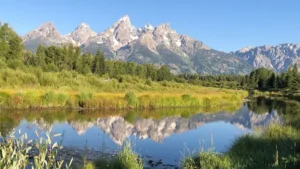
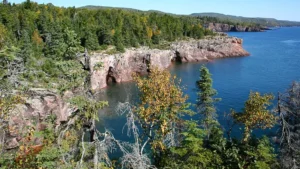
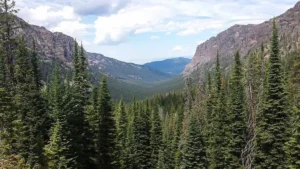

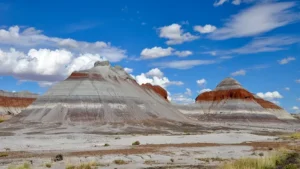


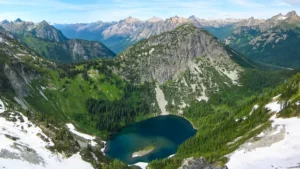



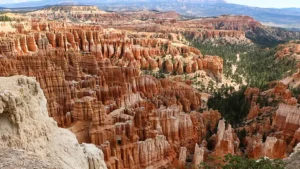
Leave your comment